June 18, 2012 |
BITE: My Journal
Up Half a Flight: Yopparai Sake Bar

Texture thrills of otoro tuna and raw prawns followed by crunch of grilled heads.
As open as I am to tasting adventures, even occasional culinary heroics, I have been mystified at times by izakayas, the sake bars that my Japan-smitten friends love. I struck out twice in Tokyo izakayas, emerging hungry. So I had doubts when my architect friend Richard Bloch suggested Yopparai for dinner. He neglected to note that he’d designed the place. Perhaps he thought I would just assume.
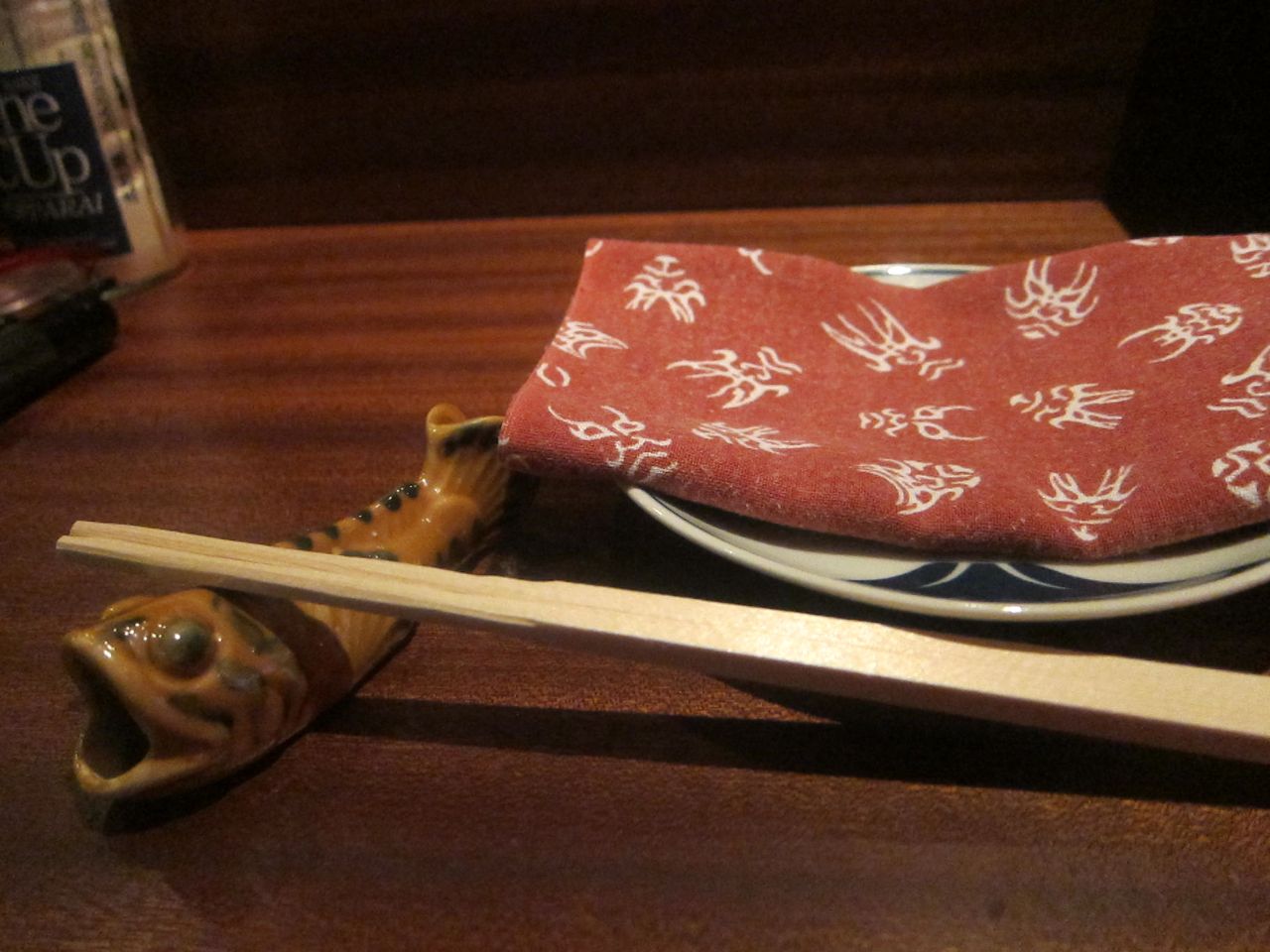
A gasping fish to hold your chopsticks in Yopparai’s counter setting.
At first I didn’t have a clue why he was so taken with the two-seat mahogany benches at the bar, so delighted to store my ungainly snake clutch, his tote and jacket in the clever locker below. He was amused that I worried about theft till he showed me the carved wooden key that locks it.
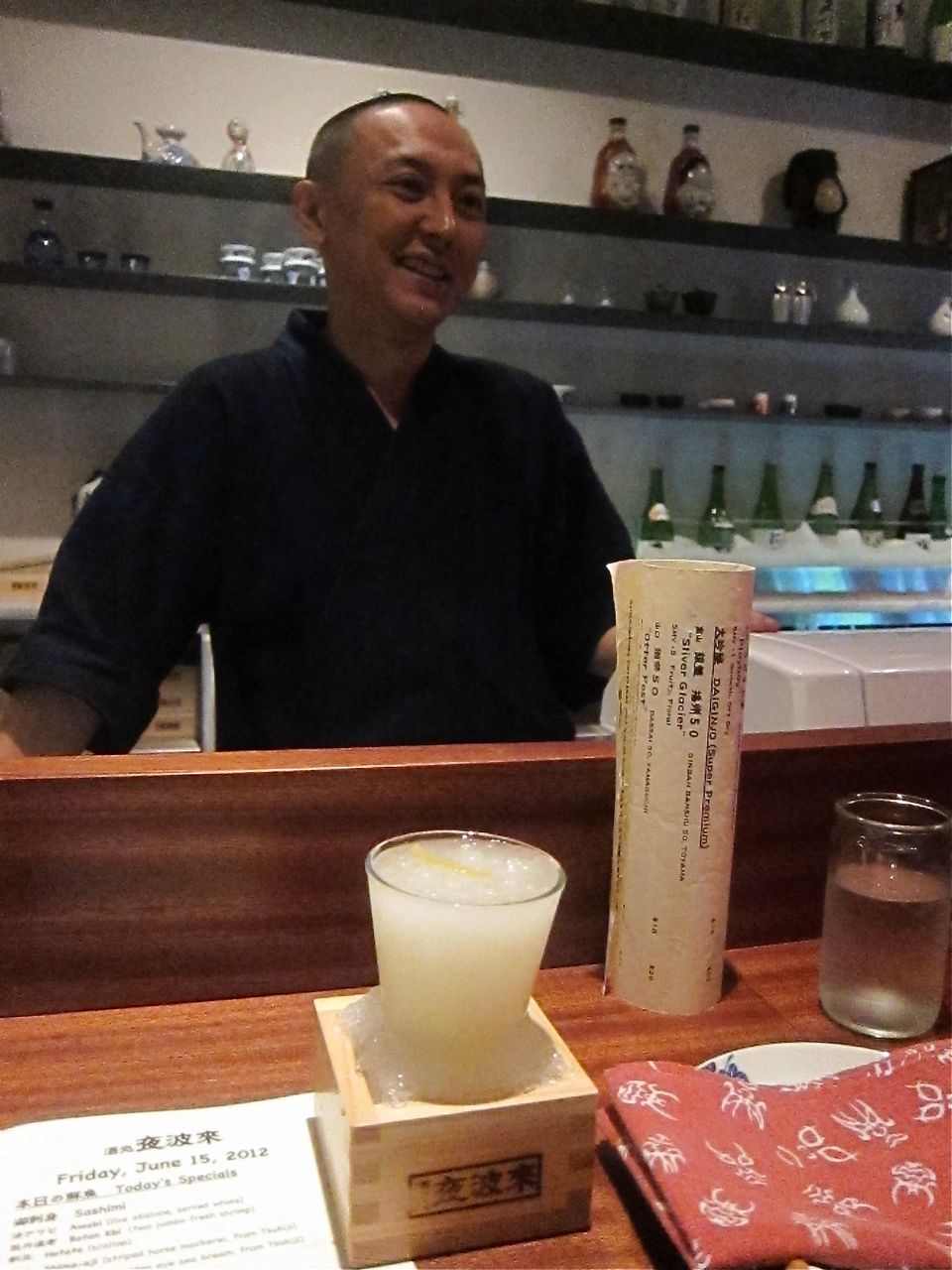
Chef-owner-sommelier Gaku Shibata blends the cocktail, grinds the ice, wrangles the sakes.
Instantly seduced by the serenity and sounds of jazz, sometime between the house cocktail – sparkling sake with Japanese yogurt and yuzu in an ice-embedded glass in a wooden box – and the remarkably un-salty edamame we shared while waiting for our sashimi, I got the drift. The owners intimate greeting. His familiarity with their resumes.
Soon enough my friend was crunching squid sashimi. “I wonder why they don’t serve ginger,” he said. Too caught up in the delicious sweet stickiness of raw shrimp, jumbo heads-on babies, and nibbling wasabi to clear my somersaulting taste buds between bites, I didn’t care.

Gaku’s second and sushi hand, Junya Miura, comes from an izakaya family in Roppongi.
He ate his two raw slices of mackerel contemplatively. That slowed me down. With a certain Zen je ne sais quoi I mimicked him, wrapping silken scallop sashimi in a ribbon of nori (fastidiously kept warm over a flame in yet another wooden box). I saved my uni for last as I always do, savoring the sea down to my toes.
The ultimate tuna came next, on its own, handsomely staged with a complex leaf sculpted from a carrot and a butterfly of daikon. So fatty – indeed otoro is a compelling argument for obesity, at least in tuna - it seemed to melt on the tongue.

At the far end of the counter, clients are protected from the heat of the kitchen by glass.
I was making my cocktail last even as its icy drift melted. Each sip left a puddle on the counter. “It’s solid mahogany,” Bloch pointed out, not noticing the puddle. “It had to be solid wood, we agreed. You don’t see that line you get when it’s veneer. I wanted the counter to stretch as it does in a diner, to the end of the room.” I’d also dribbled sauce from a tiny portion of dried, pickled seaweed with squid and carrot that owner Christy Shibata had insisted we try.
That’s a flaw here. The good-natured servers race around delivering snacks to go with sake and don’t notice dishes that need to be cleared or spattered mahogany. One woman mops up my water splotches but doesn’t notice a sticky spot in front of me. Empty plates sit too long after new ones appear. But it’s hard to stay annoyed when everyone is smiling and bowing and refilling your water glass.
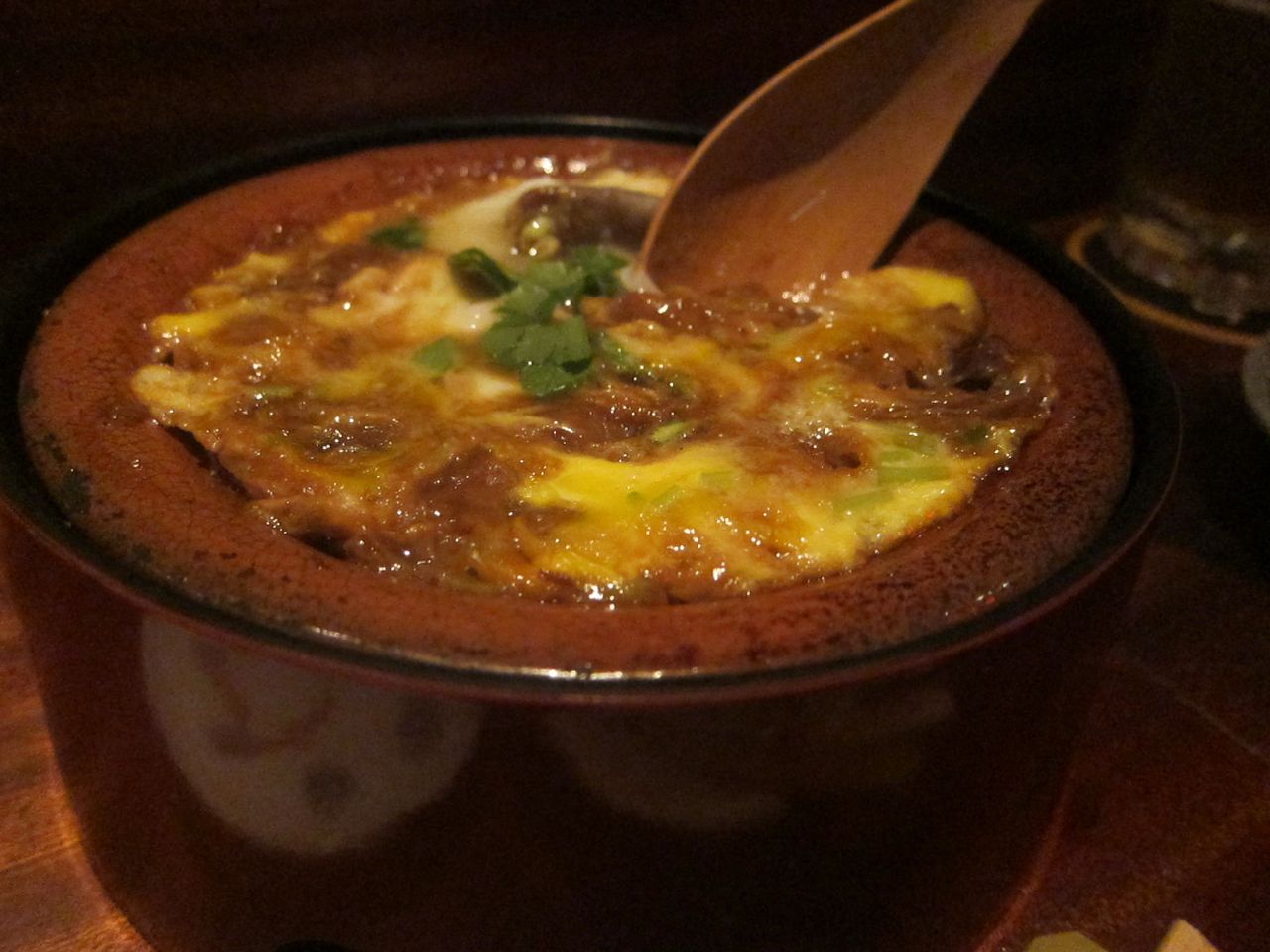
Everything about the clay pot pork belly was luscious, except, alas, the meat.
Gaku and Christy Shibata dreamed of opening a restaurant even before they came to New York. As a businessman in Tokyo, Gaku had imported American hot dog carts, harbinger of his destiny. He doubled as a chef at Aburaya, a sake pub in Roppongi. The couple moved here for Christy’s work in the financial department of NBC. The dream seemed closer. Gaku took a sake sommelier course, returning to Japan for the exams. Then, a year ago they began looking for space and found a shabby little 750 sq. ft. restaurant half a flight of steps above a bar on Rivington on the radiating LES.
You press a button to enter. Since what you see is all there is, the kitchen is exposed behind glass and storage is in boxes on a high shelf that circles the room. The sake jars and porcelains on display are from their collection. Two sommeliers tend the 30 seats, their certificates framed on the walls.
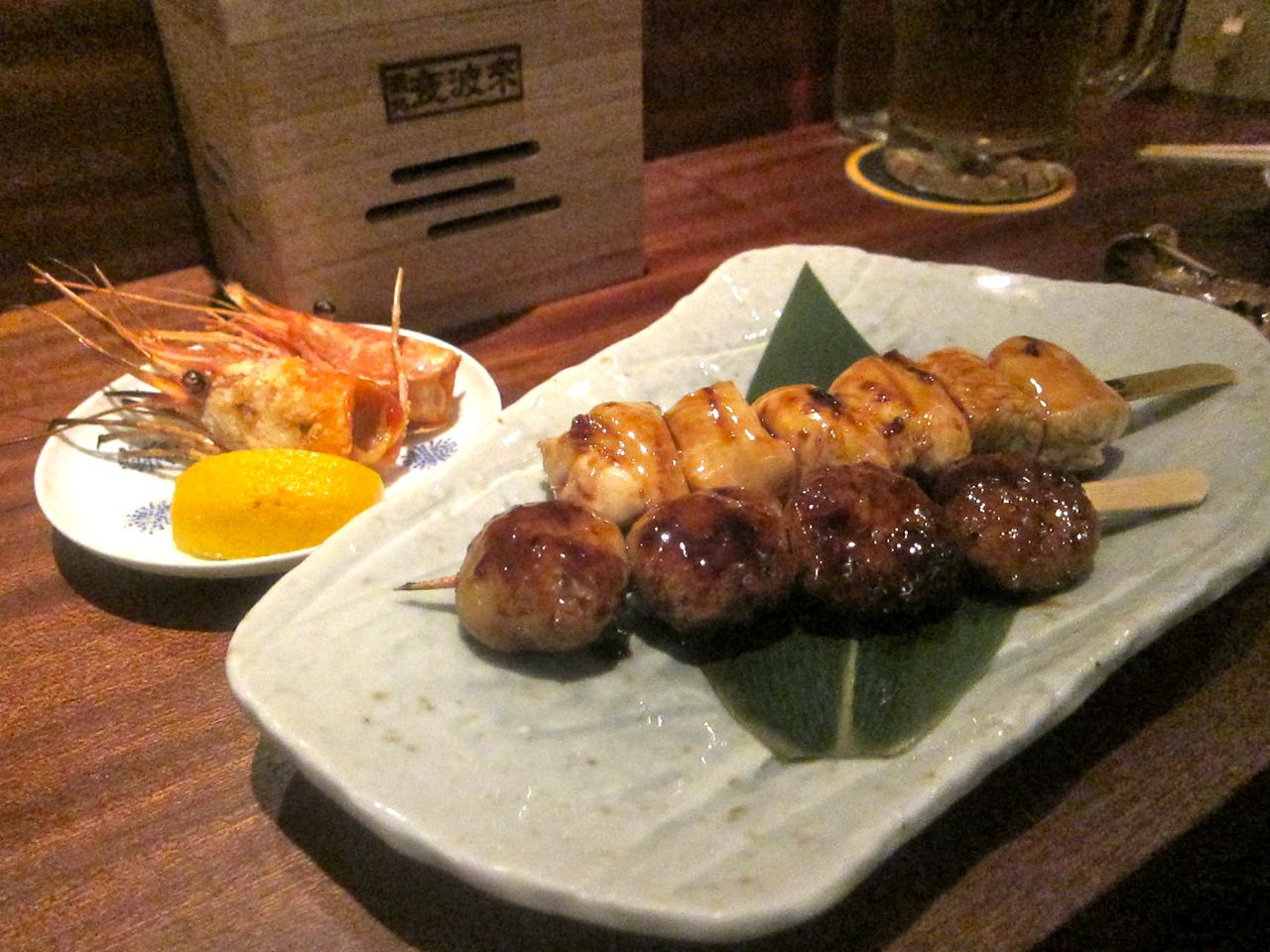
Chicken chunks and meatballs are architect Richard Bloch’s favorite barbeque snacks.
In my honor, and in the name of research, the two of us are eating more than Bloch would if he were here with his wife, Hiroko. (She was at Balthazar that night with pals from Tokyo). Items range from $3 for “soul foods” to $50 for a “four kinds of Blue Fin Tuna.” We spent $220 for the two of us but didn’t realize we were ordering four pieces of each sashimi. Two of each would have been perfect.
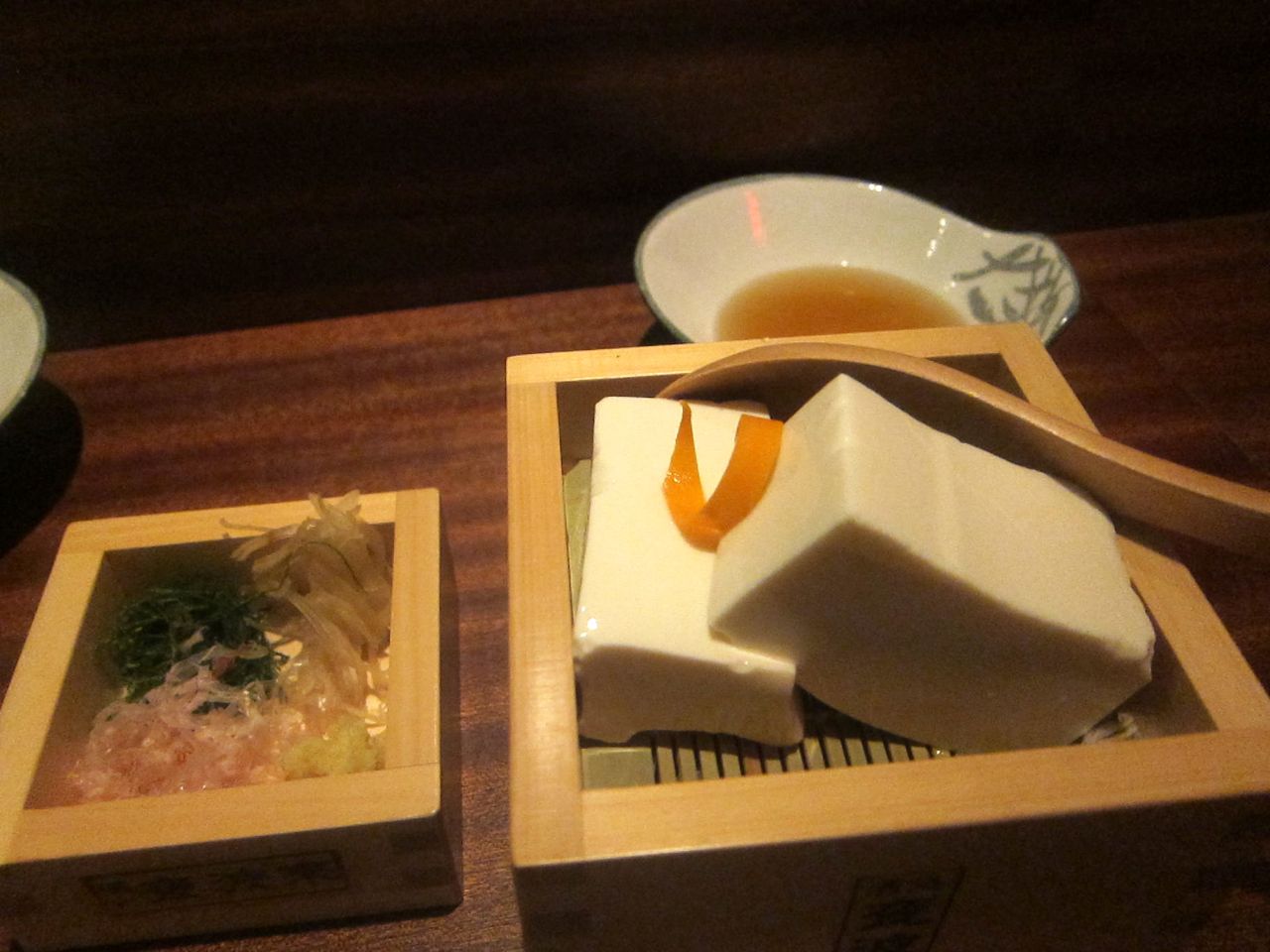
Housemade tofu comes warm or cold, but it’s summer so the chef suggests cold.
I’m not a fan of white meat chicken. I left him an extra chicken nugget, even though the bird was juicy enough even for me. And I loved the barbecued meatballs. The pork belly looked especially lush in its clay pot with blobs of soft scrambled eggs. There was ginger and mirin in the sauce too and chef Gaku gave us a small red shaker of togarashi, Japanese powdered spice. I scooped up a spoonful of the casserole, finding the belly meat uncharacteristically dry and tough. Having hesitated to choose the pork because of its fattiness, then ordering it anyway, Richard is disappointed too.
Rectangles of homemade tofu in a kelp-dashi-soy broth come in yet another wooden crib with do-it-yourself condiments: grated ginger, shiso and dried bonito. I take a bite, waiting for the earth to move as it has in the past with fresh made tofu. The ground holds. The soft jelly is very good but not quite cosmic. I think it needed to be less chilled.
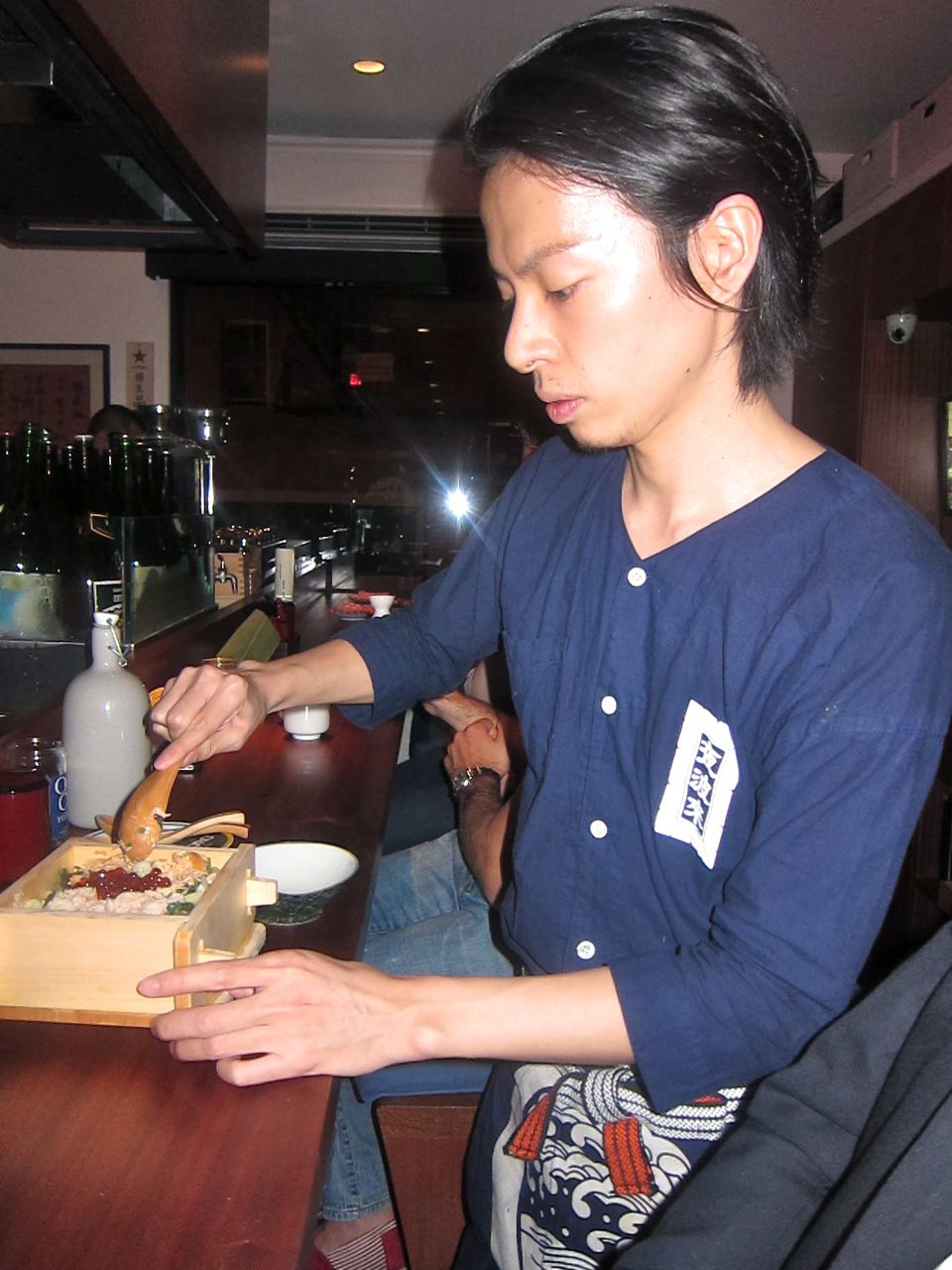
A waiter mixes salmon and crab toppings into rice steamed in a wooden box.
Without seeming to eat very much, both Bloch and I are running out of appetite, not sure we can handle our finale; rice steamed in a wooden box. Unwilling to choose between crab flakes as a topping or salmon bits and roe, we ask for half-and-half. The seafood-flecked rice is one of the evening’s triumphs. I cannot quite do it justice and am thinking how wonderful it would be for breakfast when Richard impulsively takes a big second helping.
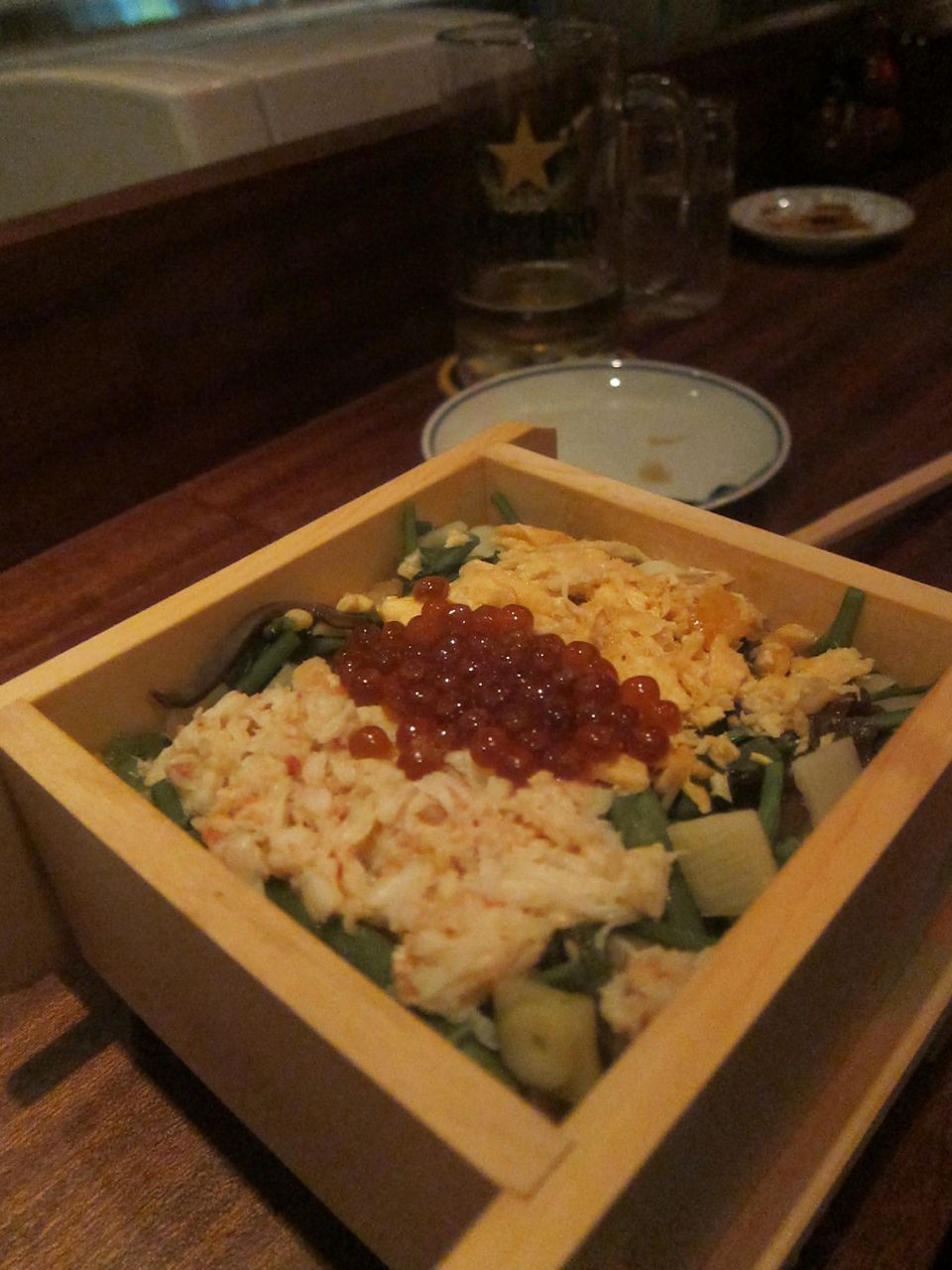
A triumph of the evening: Seiro Meshi, rice cooked in this wooden steamer.
The chef has spent the evening stepping up to retrieve large sake bottles from the refrigerator that hangs from the ceiling hidden by a wooden panel. Mahogany, of course. It’s another space-saving gambit from the architect in a spot so tightly organized that the office is tucked in a closet under the stairs.
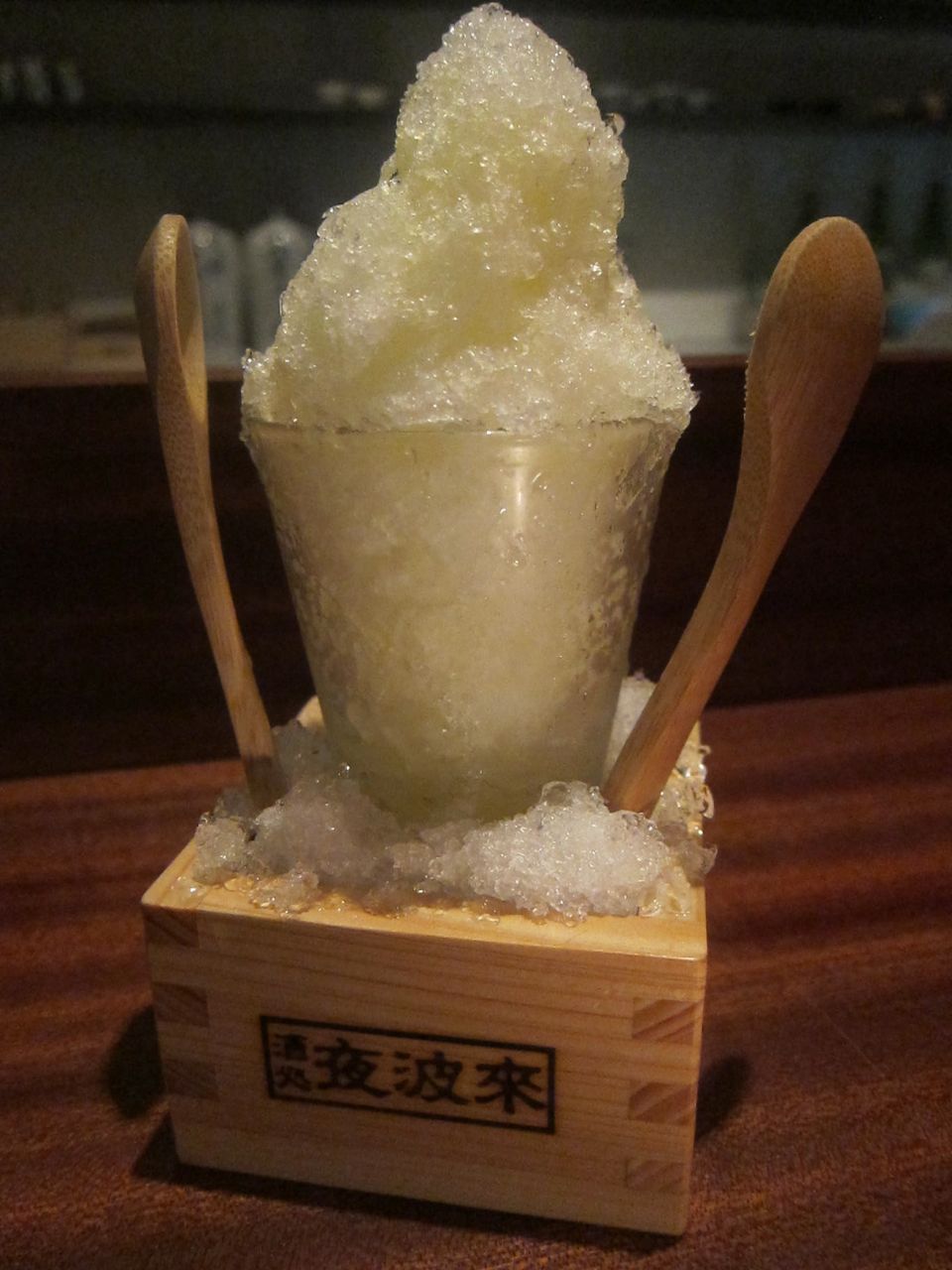
I ask Chef Gaku for an extra hit of yuzu juice on this shaved ice granita dessert.
Pasted on the low-slanted ceiling there is a collection of sake labels and, in the middle, the very first sketch the architect made after the owners showed him their pitiful little space. Now a dream come true.
151 Rivington Street between Suffolk and Clinton. 212 777 7253. Dinner Monday through Saturday 6 pm to midnight. Closed Sunday.
Photographs may not be used without permission of Gael Greene, copyright 2012. All rights reserved.
Follow my twitterings.